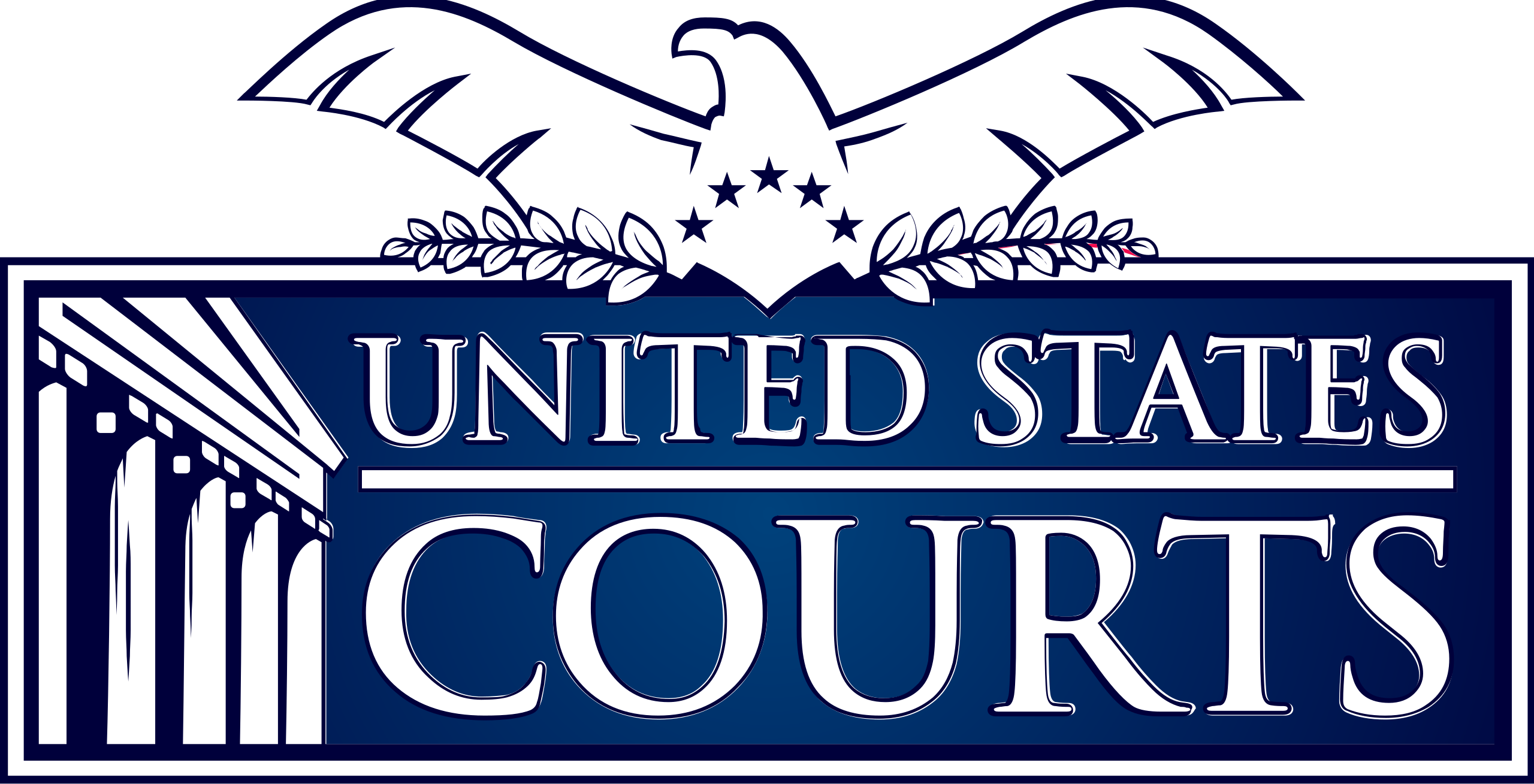






5-Star Service, Trusted & Loved by Hundreds
{{sectionName}}

{{sectionName}}

{{sectionName}}

{{sectionName}}

How the Process Works
Your Appraiser Search Ends Here
Your Appraiser Search Ends Here
.avif)

Nationwide Coverage – Appraisals Anywhere in the US

Get it done Onsite or Online

Any Asset, Covered

Defensible for Any Purpose
View all Locations
An antique silver appraisal represents a specialized professional assessment that meticulously evaluates silver objects crafted over a century ago. This comprehensive evaluation goes far beyond a simple price estimation, encompassing a nuanced exploration of historical significance, craftsmanship, and current market dynamics.
The process involves a detailed forensic examination of the silver piece, where expert appraisers leverage deep knowledge to uncover intricate details about the item's provenance. Specialized techniques are employed to authenticate the piece's origin, including careful analysis of hallmarks, maker's stamps, and distinctive design elements that provide critical insights into its historical context.
Condition plays a pivotal role in determining value. Professional appraisers conduct meticulous inspections, examining every surface for signs of wear, potential restoration attempts, and structural integrity. They assess subtle nuances like patina development, manufacturing techniques, and preservation quality that can dramatically influence the item's market worth.
Market research forms another crucial component of the appraisal process. Appraisers conduct extensive comparative analyses, tracking recent auction results, collector trends, and current market demands to establish a precise and current valuation. This approach ensures that the assessment reflects not just the silver's intrinsic material value, but its broader collectible significance.
The ultimate goal of an antique silver appraisal extends beyond a simple monetary figure. It provides owners with comprehensive documentation that serves multiple purposes, from insurance documentation to estate planning, offering a definitive understanding of the item's historical and financial importance.
Antique silver appraisers represent a nuanced professional landscape with distinct specialties and expertise. These professionals can be categorized based on their professional focus, depth of knowledge, and service delivery methods. Understanding these variations helps collectors and owners select the most appropriate expert for their specific silver valuation needs.
General appraisers offer broad knowledge across multiple antique categories, capable of evaluating various silver items with a comprehensive but less specialized approach. Their versatility allows them to assess diverse silver pieces, though they may lack granular insights into rare or complex items.
Specialty appraisers represent a more focused category, concentrating on specific historical periods, cultural origins, or design styles. These experts possess deep, targeted knowledge about particular silver manufacturing eras, makers, or regional craftsmanship. Their expertise enables precise authenticity assessments and nuanced market value determinations.
Certified appraisers bring professional credentials from recognized institutions, demonstrating rigorous training and adherence to established ethical standards. Their qualifications make them particularly valuable for formal documentation requirements like insurance evaluations or estate planning.
Auction house appraisers leverage extensive market experience, providing real-time insights into current silver valuation trends. Their proximity to active market dynamics allows them to offer sophisticated pricing assessments based on contemporary collector interests and market demands.
Independent appraisers operate autonomously, offering customized services with flexible engagement models. Their professional independence allows for personalized approaches tailored to unique client requirements and specialized silver item assessments.
Online appraisers represent an emerging category, utilizing digital platforms to conduct remote evaluations. Through advanced photographic documentation and detailed item descriptions, these professionals provide convenient assessment options for clients unable to engage in traditional in-person consultations.
Each appraiser type contributes unique perspectives to silver valuation, enabling owners to find precisely matched expertise for their specific needs.
Antique silver items are more than mere decorative pieces; they are repositories of history, craftsmanship, and potential financial value. An expert appraisal offers comprehensive insights that extend far beyond a simple price tag.
Insurance protection represents a critical motivation for professional assessment. A detailed appraisal ensures accurate coverage, preventing potential financial gaps in the event of loss, damage, or theft. Insurance providers rely on professional documentation to establish appropriate compensation levels.
Estate planning demands precise valuation of inherited silver pieces. A professional appraisal provides clear, objective documentation that can streamline inheritance processes, minimize potential family disputes, and establish a transparent framework for asset distribution.
Tax considerations make appraisals particularly valuable for those considering charitable donations. When donating antique silver items exceeding $5,000, a qualified professional appraisal becomes essential for substantiating value and maximizing potential tax deductions.
For collectors and sellers, an appraisal delivers a realistic market assessment. This knowledge empowers informed decision-making, whether preparing to sell at auction, negotiate with potential buyers, or understand the current market positioning of a specific piece.
Beyond monetary considerations, an appraisal unveils the historical narrative embedded within each silver item. Professional assessment reveals intricate details about craftsmanship, origin, and cultural significance, transforming an object from a mere possession to a meaningful artifact with its own unique story.
Understanding the multifaceted value of antique silver through professional appraisal enables owners to make informed, strategic decisions about preservation, insurance, potential sale, and long-term asset management.
Online antique silver appraisals have become increasingly sophisticated, offering clients a convenient and professional alternative to traditional in-person evaluations. Skilled appraisers can now accurately assess silver antiques through detailed photographic documentation and comprehensive item descriptions submitted electronically.
The virtual appraisal process typically involves clients providing high-resolution images from multiple angles, along with critical details about the item's provenance, markings, condition, and historical context. Advanced video conferencing platforms like Zoom or Skype enable real-time interactions, allowing appraisers to conduct interactive examinations and answer client questions immediately.
Professional online appraisals adhere to the Uniform Standards of Professional Appraisal Practice (USPAP), ensuring rigorous methodology and credible valuation regardless of assessment format. This approach eliminates geographical constraints, providing flexibility for clients located anywhere and streamlining the entire valuation experience.
While online appraisals offer remarkable convenience, they are most effective when clients provide extensive, clear documentation. Precise photographs, accurate measurements, and comprehensive background information are crucial for delivering an accurate assessment of an antique silver item's condition, authenticity, and market value.
Clients should understand that some complex or rare pieces might still require in-person examination to determine a definitive valuation. However, for many antique silver items, online appraisals represent an efficient, professional, and accessible method of understanding an item's worth.
What Makes Antique Silver Valuable?
Antique silver has captivated collectors and enthusiasts for centuries, largely due to its beauty, craftsmanship, and historical significance. Understanding the factors that contribute to the value of antique silver is essential for appraisers and collectors alike.
Key Factors Determining Antique Silver Value
1. Material Composition
The silver content in an item significantly influences its value:
- Sterling silver (92.5% pure silver) typically commands higher prices
- Silver-plated items generally have lower intrinsic value
- Higher silver content directly correlates with increased market worth
2. Maker's Mark
Hallmarks provide critical insights into an item's value:
- Established silversmiths contribute to a piece's prestige
- Recognized manufacturers can dramatically increase collectibility
- Authentic marks from renowned periods often command premium prices
3. Age and Historical Context
Historical significance plays a crucial role in valuation:
- Antique silver typically refers to items over 100 years old
- Pieces with documented provenance are highly prized
- Connection to notable historical figures or events increases desirability
4. Design and Craftsmanship
Artistic elements are fundamental to an item's appraisal:
- Intricate designs add substantial value
- Unique stylistic elements attract serious collectors
- Fine detailing demonstrates exceptional craftsmanship
- Rarity in design significantly boosts market appeal
5. Condition
Preservation is paramount in determining value:
- Well-maintained pieces retain more of their original worth
- Minimal wear indicates proper care and handling
- Poor restoration or excessive polishing can significantly decrease value
Ultimately, antique silver appraisal requires a nuanced understanding of multiple interconnected factors. The interplay between material composition, historical significance, craftsmanship, and preservation creates a comprehensive assessment of an item's true value.
Decoding the World of Silver Collectibles
Understanding Antique Silver Valuations
Antique silver collectibles represent a captivating blend of artistic excellence, historical narrative, and exceptional craftsmanship. These intricate pieces offer more than mere decorative value—they are tangible connections to cultural heritage and skilled artisanal traditions.
Key Evaluation Factors for Silver Collectibles
- Hallmarking System: A critical authentication method revealing:
- Maker's identity
- Year of production
- Geographic origin
- Condition Assessment: Crucial elements impacting valuation:
- Presence of wear or damage
- Quality of potential repairs
- Overall structural integrity
- Rarity and Desirability: Factors increasing potential value:
- Limited edition pieces
- Historical significance
- Works by renowned silversmiths
Assessing Craftsmanship and Design
The aesthetic and technical qualities of antique silver transcend simple monetary value. Discerning collectors appreciate:
- Detailed engraving techniques
- Intricate pattern complexity
- Period-specific design elements
- Overall artistic composition
Historical Periods of Significance
Different eras showcase unique silver crafting characteristics, with notable periods including:
- Georgian (1714-1837): Elegant, restrained designs
- Victorian (1837-1901): Ornate, elaborate styling
- Art Nouveau (1890-1910): Flowing, organic motifs
- Art Deco (1920-1940): Geometric, modernist approaches
Understanding these nuanced evaluation criteria empowers collectors and enthusiasts to appreciate the rich narrative behind each silver collectible, transforming them from mere objects into historical artifacts with profound cultural significance.
Are Your Silver Pieces Worth More Than You Think?
The world of antique silver represents a fascinating intersection of history, craftsmanship, and value. Understanding the nuanced factors that contribute to silver valuation can help collectors and enthusiasts appreciate their treasured pieces more deeply.
Key Factors in Silver Valuation
Hallmarks and Maker's Marks
Antique silver pieces (typically over 100 years old) derive significant value from their hallmarks, which provide critical insights into:
- Age of the piece
- Manufacturer's origin
- Authenticity verification
Recognizing prestigious manufacturers like Tiffany & Co., Gorham, and Reed & Barton can substantially impact a piece's desirability and market value.
Silver Composition
The metal's purity plays a crucial role in determining value:
- Sterling Silver: 92.5% pure silver, typically most valuable
- Coin Silver: Contains approximately 90% pure silver
- Higher silver content generally correlates with increased worth
Condition and Preservation
A silver piece's condition significantly influences its appraisal value. Key considerations include:
- Minimal wear and damage
- Preservation of original patina
- Absence of significant tarnishing
Provenance and Historical Significance
Documentation and historical context can dramatically enhance a silver item's value, particularly when:
- Pieces have documented ownership history
- Connected to notable historical figures
- Part of a significant collection or era
Aesthetic and Artistic Merit
Beyond technical specifications, an antique silver piece's artistic qualities contribute to its overall value, including:
- Craftsmanship quality
- Design complexity
- Artistic innovation
The true value of antique silver extends far beyond monetary worth. Each piece represents a unique narrative of craftsmanship, cultural heritage, and artistic expression, inviting collectors to appreciate the rich stories embedded in these remarkable artifacts.
The Collector's Guide to Silver Authenticity
Navigating the intricate world of antique silver requires a discerning eye and comprehensive understanding. Collectors must be vigilant against reproductions and counterfeit pieces that proliferate the market.
Key Strategies for Verifying Silver Authenticity
1. Hallmarks and Identification Markers
- Examine precise hallmarks indicating:
- Manufacturer origin
- Purity level
- Production period
- Utilize comprehensive hallmark reference guides
- Recognize distinctive marks from renowned silversmiths
2. Material Composition Analysis
- Understand silver purity variations:
- Sterling silver: 92.5% pure silver
- Coin silver: 90% pure silver
- Consider professional metallurgical testing
- Look for consistent metal quality and coloration
3. Craftsmanship and Detailed Examination
- Assess manufacturing techniques:
- Hand-crafted versus machine-produced
- Intricate design elements
- Signs of historical manufacturing processes
- Evaluate surface texture and aging characteristics
- Identify genuine patina and wear patterns
4. Provenance Documentation
- Collect comprehensive historical documentation
- Verify:
- Original purchase receipts
- Previous ownership records
- Historical appraisals
- Trace item's historical lineage
5. Expert Consultation
- Engage specialized antique silver experts
- Request comprehensive authentication assessments
- Utilize professional insights for definitive verification
Mastering these authentication techniques empowers collectors to confidently explore the rich, nuanced world of antique silver, preserving historical treasures and making informed acquisitions.
Historical Influences on Silver Valuation
Historical Influences Shaping Silver Valuation
Antique silver valuation is a complex process deeply intertwined with historical nuances that extend far beyond simple monetary worth. Each piece carries a unique narrative reflecting cultural, artistic, and economic contexts of its time.
Historical Significance and Cultural Context
- Silver has transcended mere functional utility throughout history
- Symbolized wealth, social status, and artistic achievement
- Particularly prominent during Renaissance and Georgian periods
- Represents intricate cultural and societal transformations
Maker's Mark and Provenance
The origin and creator of antique silver dramatically influence its valuation:
- Maker's marks provide crucial historical authentication
- Renowned silversmiths command premium valuations
- Regional characteristics significantly impact desirability
- Pieces from prestigious cities like London or Philadelphia often fetch higher prices
Craftsmanship and Preservation
Critical elements determining an antique silver piece's value include:
- Overall condition of the item
- Quality of original craftsmanship
- Intricacy of design and engraving
- Extent of wear and potential restoration
Market Dynamics and Historical Trends
Silver valuation is not static but dynamically influenced by:
- Shifting collector interests
- Global economic conditions
- Historical revival movements
- Broader luxury market trends
Understanding these multilayered historical influences transforms antique silver appraisal from a mere transactional process to an appreciation of cultural heritage and artistic expression.
Navigating the Antique Silver Appraisal Process
Antique silver appraisal is a nuanced process that requires a keen understanding of history, craftsmanship, and market trends. Whether you're looking to sell, insure, or simply understand the value of your antique silver items, navigating this complex landscape is essential.
Understanding Antique Silver
Antique silver pieces can range from flatware and serving dishes to ornate jewelry and decorative items. Key factors that significantly influence their value include:
- Age: Items made before 1820 are typically considered antiques and may command higher prices.
- Maker: The reputation and mark of the silversmith can dramatically affect the item's value. Renowned makers usually yield a better return.
- Condition: The preservation state, including any repairs or restorations, plays a critical role in determining value. Original pieces in excellent condition are generally more valuable.
- Provenance: A documented history of ownership can substantially enhance an item's worth, especially if it has notable historical significance.
The Appraisal Process
- Initial Assessment: Begin with a visual examination by a qualified appraiser specializing in antique silver. This comprehensive assessment includes:
- Checking for authentic hallmarks
- Assessing intricate craftsmanship
- Determining the overall condition of the piece
- Research and Comparables: Professional appraisers conduct thorough market research, carefully comparing your piece with similar items recently sold or currently on the market. This critical step ensures a realistic and competitive valuation.
- Documentation: A formal appraisal report will meticulously document the findings, including:
- Detailed item descriptions
- High-quality photographs
- Appraiser's professional qualifications
- Communication: Following the appraisal, a reputable appraiser should provide clear insights into the findings and address any questions about the valuation process. Understanding the rationale behind a value can be just as important as the monetary figure itself.
Final Insights
Navigating the antique silver appraisal process can be an enriching experience, offering fascinating insights into your items' hidden histories. By working with knowledgeable professionals and understanding key valuation criteria, you can ensure a more accurate appraisal outcome, whether for personal knowledge or financial purposes.
How to Select the Right Silver Appraiser
When selecting the right silver appraiser, it's crucial to consider several key factors that ensure an accurate and trustworthy evaluation of your antique silver items.
Essential Criteria for Choosing a Silver Appraiser
- Credentials and Qualifications
- Seek appraisers with professional certifications from recognized organizations
- Look for memberships in reputable associations like:
- American Society of Appraisers (ASA)
- International Society of Appraisers (ISA)
- Verify credentials as an indicator of professional commitment and ethical standards
- Specialized Experience and Expertise
- Choose appraisers with specific expertise in antique silver
- Confirm their ability to:
- Identify unique historical features
- Assess intricate design elements
- Understand market value nuances
- Request information about their background with similar silver pieces
- Professional Reputation
- Research potential appraisers thoroughly
- Examine:
- Client reviews
- Professional references
- Community standing
- Request and contact references directly
- Transparent Appraisal Methodology
- Inquire about their valuation process
- Ensure they can explain:
- Value determination techniques
- Factors considered in assessment
- Comparative market analysis approach
- Seek clear, detailed explanations of their evaluation method
- Clear Fee Structure
- Understand pricing models, which may include:
- Flat fee rates
- Commission-based pricing
- Value-dependent charges
- Confirm included services:
- Written documentation
- Potential follow-up consultations
- Understand pricing models, which may include:
By carefully evaluating these critical aspects, you can confidently select an appraiser who will provide a comprehensive and reliable assessment of your antique silver collection.
Preserving Your Silver: Conservation and Care
Preserving Silver's Timeless Beauty
Proper care and conservation of antique silver is crucial for maintaining its aesthetic appeal, historical value, and structural integrity. By implementing strategic preservation techniques, collectors and owners can protect these precious heirlooms from deterioration.
Cleaning Best Practices
- Gentle Cleaning Approach
- Use soft, lint-free microfiber cloths to prevent surface scratching
- Clean with mild, pH-neutral soap solutions
- Avoid abrasive materials that can damage delicate surfaces
- Polishing Guidelines
- Polish only when absolutely necessary
- Select professional-grade silver polishes designed for antiques
- Apply polish sparingly to maintain original patina
Strategic Storage Techniques
- Environmental Control
- Maintain consistent, low-humidity environments
- Use silica gel packets to absorb moisture
- Store in climate-controlled spaces away from direct sunlight
- Protective Measures
- Wrap pieces in anti-tarnish cloths
- Store items individually to prevent scratching
- Use padded storage containers for delicate pieces
Proactive Maintenance
- Regular Inspections
- Monitor for signs of tarnish or discoloration
- Check structural integrity of joints and decorative elements
- Address potential issues promptly
- Professional Assessment
- Consider periodic expert evaluations
- Seek specialized restoration for significant pieces
- Document condition and provenance
Implementing these comprehensive conservation strategies will help preserve the beauty, value, and historical significance of your antique silver collection for future generations to appreciate and enjoy.
Common Silver Appraisal Myths Debunked
Navigating the world of antique silver can be complex, with numerous misconceptions that can mislead collectors and owners. Let's explore and clarify some of the most common myths surrounding silver appraisal.
Common Misconceptions in Silver Valuation
Myth 1: Every Silver Item Is Automatically Valuable
Not all silver items are created equal. While silver has inherent value, an item's worth depends on multiple critical factors:
- Historical significance
- Craftsmanship quality
- Overall condition
- Current market demand
Mass-produced silver pieces typically have minimal value beyond their raw material worth.
Myth 2: Age Is the Primary Value Determinant
Age alone does not guarantee high value. Factors that significantly impact an item's worth include:
- Artisan reputation
- Design complexity
- Manufacturing techniques
- Preservation state
Some contemporary pieces by renowned silversmiths can be more valuable than older, less distinguished items.
Myth 3: Silver Plate Equals Sterling Silver
A critical distinction exists between silver types:
- Sterling Silver: 92.5% pure silver, significantly more valuable
- Silver Plate: Thin silver coating over base metal, substantially lower value
Understanding this difference is crucial for accurate valuation.
Myth 4: Appraisals and Assessments Are Interchangeable
Key differences between appraisals and assessments:
- Appraisal: Professional market value evaluation
- Assessment: Typically used for tax purposes
Always consult a specialized antique silver appraiser for precise market insights.
By understanding these nuanced distinctions, collectors can make more informed decisions about their silver items and appreciate the true complexities of silver valuation.
Resources for Serious Silver Collectors
Key Resources for Serious Silver Collectors
Building a valuable antique silver collection requires strategic knowledge and continuous learning. These essential resources will help collectors develop expertise and make informed decisions.
Understanding Silver Composition
- Familiarize yourself with different silver types:
- Sterling silver
- Coin silver
- Silver-plated items
- Utilize silver hallmark databases to:
- Identify purity
- Determine piece origin
- Verify authenticity
Historical Research Techniques
- Explore comprehensive research sources:
- Museum archives
- Online historical catalogs
- Auction house records
- Investigate key details:
- Manufacturing era
- Original designer
- Craftsmanship techniques
Professional Networking Strategies
- Connect with industry professionals:
- Experienced appraisers
- Antique dealers
- Long-time collectors
- Engage through:
- Trade shows
- Collector forums
- Specialized conferences
Digital Learning Platforms
- Join online collector communities:
- Social media groups
- Specialized forums
- Interactive discussion boards
- Benefits include:
- Real-time market insights
- Peer knowledge sharing
- Collection comparison opportunities
Continuous Education
- Stay informed through:
- Industry publications
- Specialized newsletters
- Collector blogs
- Track important information:
- Market trend analyses
- Collection maintenance tips
- Upcoming auction details
By strategically leveraging these resources, serious collectors can enhance their expertise, make intelligent investments, and preserve the rich legacy of antique silver collections.
BEST-IN-CLASS APPRAISERS, CREDENTIALED BY:






.svg)








